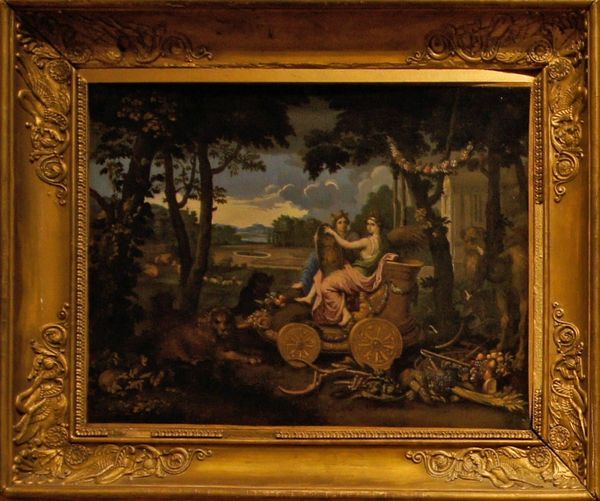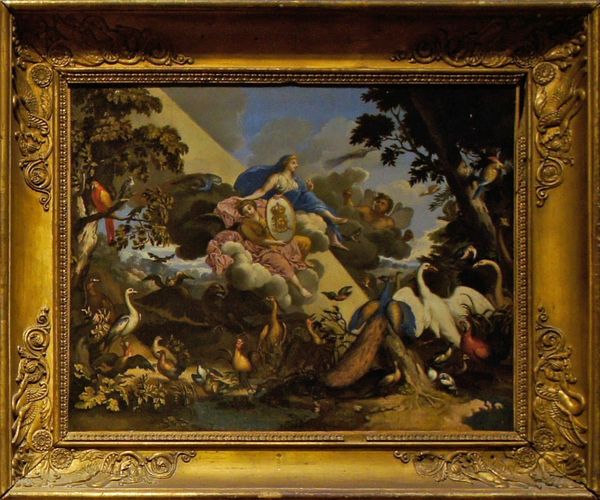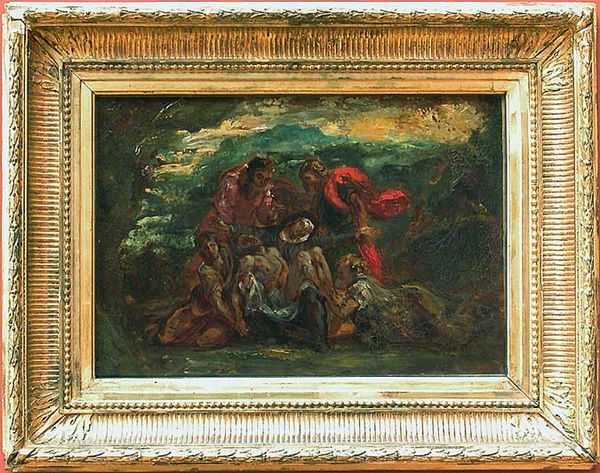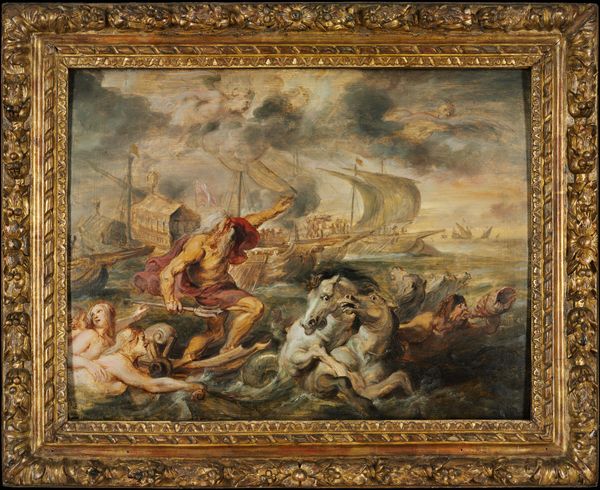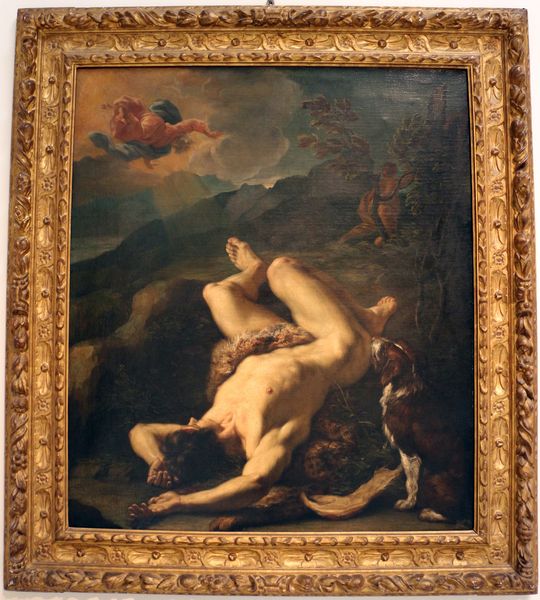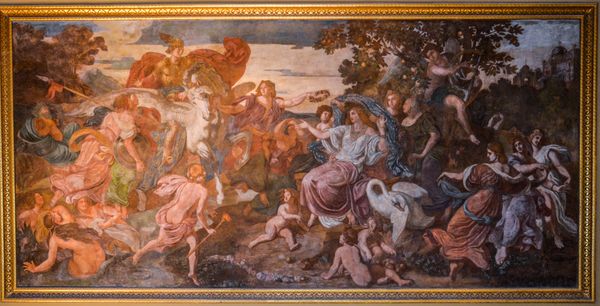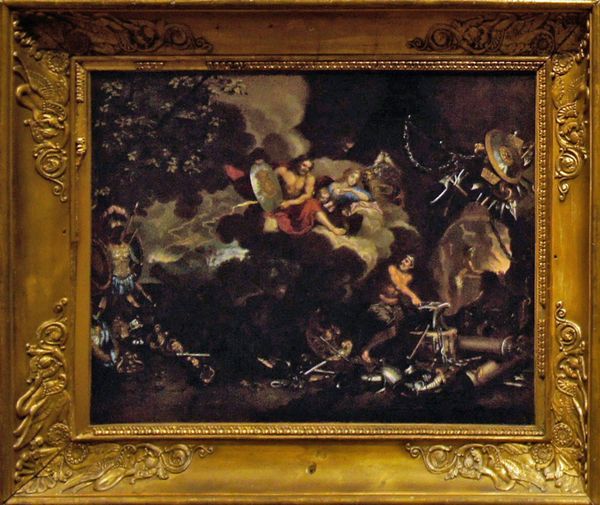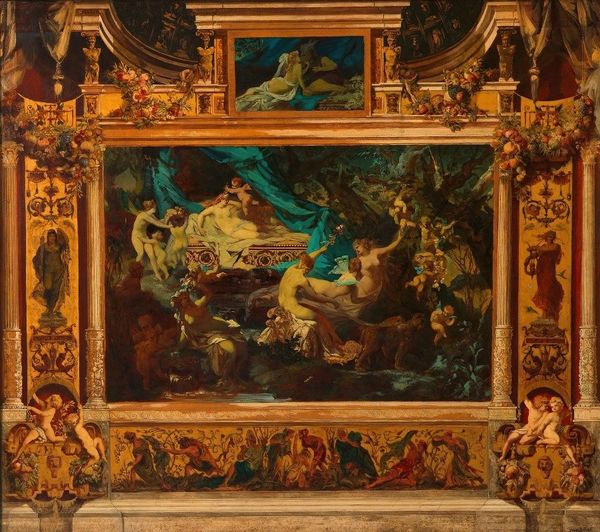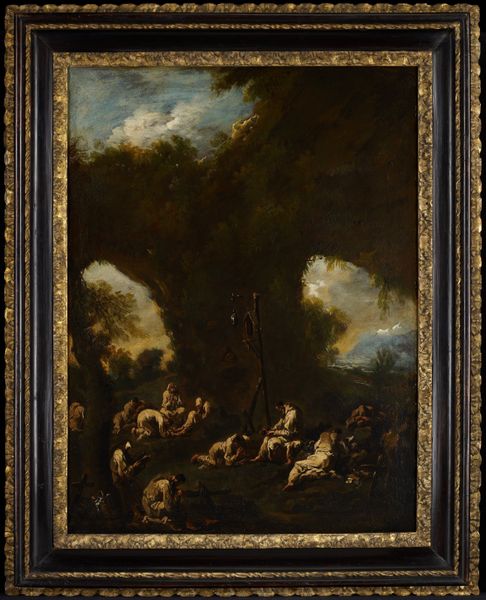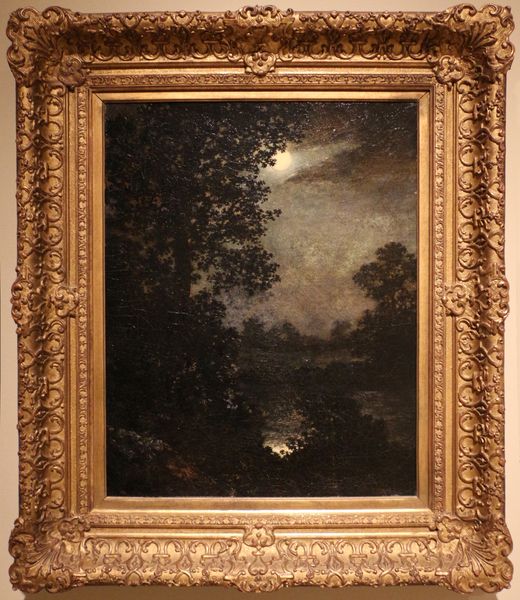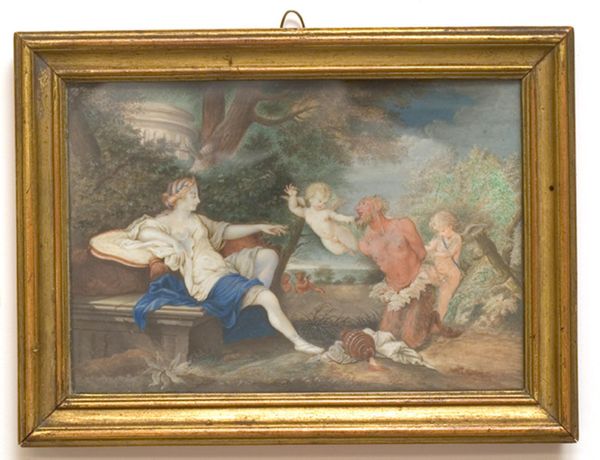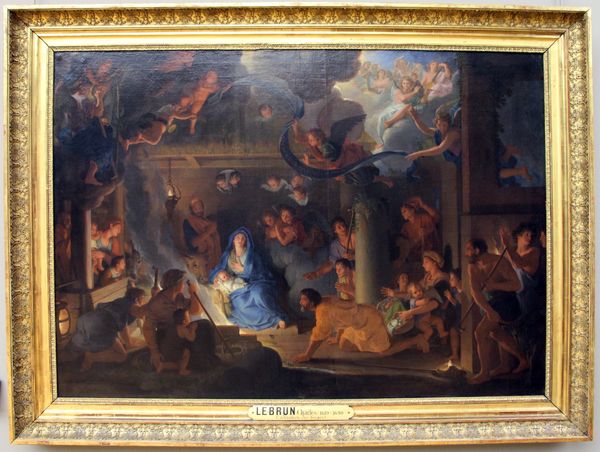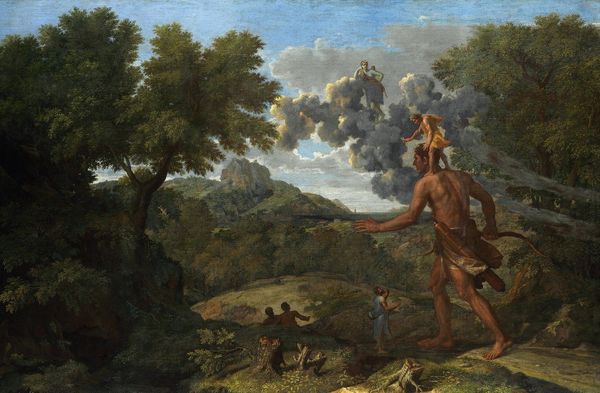
painting, oil-paint
#
allegory
#
baroque
#
painting
#
oil-paint
#
landscape
#
figuration
#
oil painting
#
history-painting
#
academic-art
Copyright: Public domain
Charles Le Brun made this oil on canvas painting, entitled L’eau Partie D’un Quadriptyque, sometime in the 17th century. Le Brun was principal painter to Louis XIV, and very much a creator of propaganda. The pigment, ground from minerals and mixed with linseed oil, was likely prepared by workshop assistants, as was the canvas itself. Labor division was the norm in large studios like Le Brun’s. He was ennobled for his contributions to the glory of France. Water is here allegorized as a chariot drawn by mythical beasts. Le Brun didn’t just make paintings; he also designed tapestries and oversaw all the royal artistic production. Consider then, how this painting exemplifies the luxury of the period, the power of the monarchy, and the many hands required to make it all possible. By understanding the context of its creation, we come to appreciate how art, craft, and power were intertwined in the Baroque era.
Comments
No comments
Be the first to comment and join the conversation on the ultimate creative platform.
